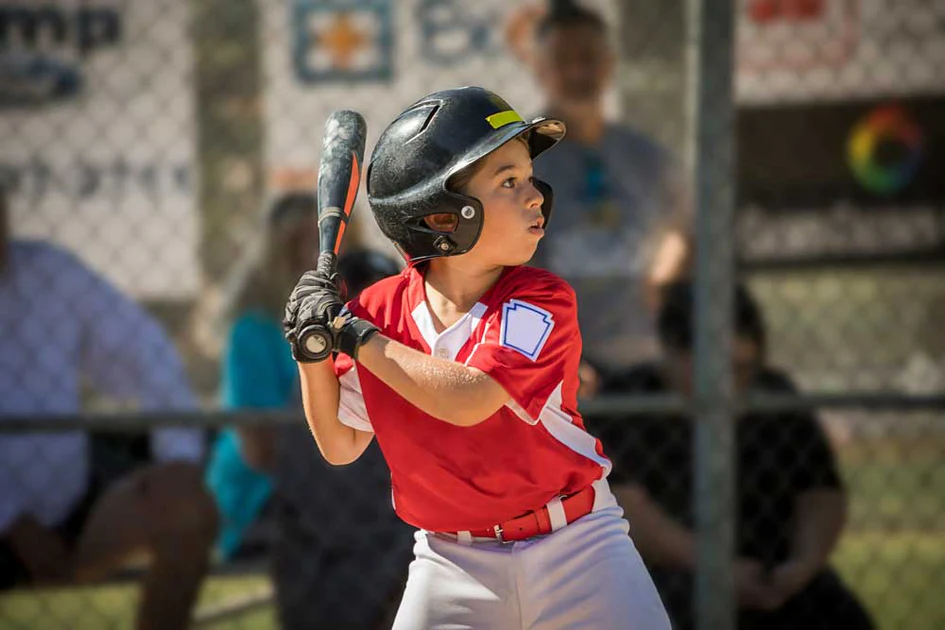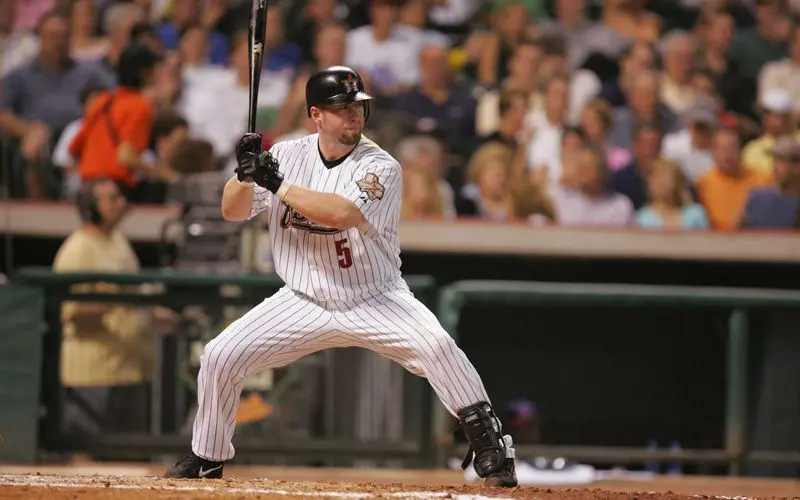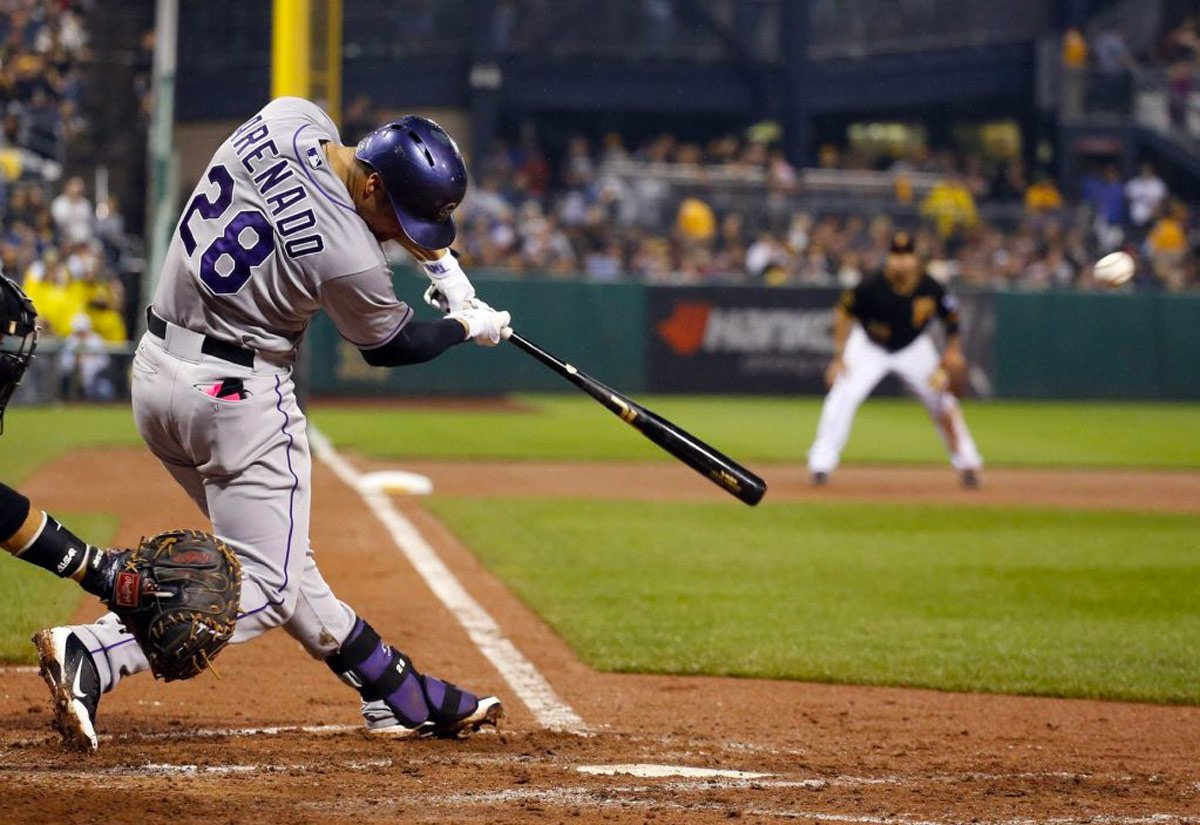
When it comes to baseball, teaching young players the fundamentals of a solid swing is one of the most important things you can do for their development. Starting with the right mechanics not only sets them up for success in the future but also helps prevent bad habits from forming early on. In this post, we’ll break down how to teach the basics of a good swing, along with some fun drills and exercises that keep kids engaged and motivated.
Key Fundamentals of a Good Swing

Before diving into drills and exercises, it’s crucial to get the basics of the swing down. Here’s how to teach young players the essential elements of a good swing:
1. The Right Stance

- Feet Position: Start by having the player stand with their feet about shoulder-width apart. This creates a solid and balanced base.
- Weight Distribution: Make sure their weight is evenly distributed between both feet, slightly leaning towards the balls of the feet, ready to react.
- Knees Bent: Keep the knees slightly bent. This helps the player maintain better balance and readiness to move.
2. Proper Grip

- Hand Placement: The hands should be placed together, with the dominant hand on top of the bat.
- Relaxed Grip: Teach the player to grip the bat firmly but without tension. The bat should rest in the fingers, not the palms, to ensure flexibility and control.
3. Eye on the Ball

- Focus: It’s essential for young players to keep their eyes on the ball, from the pitcher’s hand all the way through to contact.
- Head Position: Instruct them to keep their head still and eyes level. This helps with focus and tracking the ball accurately.
4. Swing Path

- Backswing: Begin with a small load, shifting the weight slightly to the back leg and moving the hands back in preparation for the forward swing.
- Forward Swing: As the pitch comes, shift weight forward, initiating the swing with the hips and hands working together.
- Contact Point: Aim for making contact with the sweet spot of the bat, just in front of the body, to ensure solid hits.
- Follow-Through: Finish the swing by allowing the bat to complete its natural arc, following through after making contact.
Pro Tip: Consider using the Louisville Slugger UltraInstructoswing for instant feedback. This tool helps young players identify and correct bad swings right away.
Fun Drills and Exercises for Kids
Keeping young players engaged while learning the basics is key to success. Here are some fun drills and exercises that make practicing the fundamentals both effective and enjoyable:
1. Tee Work
- Setup: Place a batting tee at the player’s waist height.
- Objective: Focus on making consistent, clean contact with the ball.
- Variation: To keep things interesting, use different types of balls (like softballs or tennis balls) and have the player aim to hit to different parts of the field.
2. Soft Toss
- Setup: Have a coach or parent softly toss the ball from the side while the player focuses on making solid contact.
- Objective: This drill helps improve hand-eye coordination and timing.
- Tip: Remind players to keep their eyes on the ball and work on their swing path, ensuring a smooth, natural motion.
3. Mirror Drill
- Setup: Use a full-length mirror where the player can watch their stance and swing.
- Objective: This allows players to visualize their form and correct any mistakes immediately.
- Tip: Focus on key aspects like stance, grip, and swing path to ensure the player is practicing good mechanics.
4. Target Practice
- Setup: Hang a target (such as a hanging ball or a net) in a safe area where players can practice hitting.
- Objective: This drill helps players work on accuracy and control.
- Variation: Use targets of different sizes or place them at different heights to challenge the player’s precision.
5. Fun Games: Blitzball
- Setup: Blitzball is a dynamic, backyard game that mimics baseball mechanics but adds a fun twist.
- Objective: It combines fun and skill-building by encouraging kids to work on their pitching and hitting skills.
- Tip: Create a friendly competition to keep the energy high and motivate players to keep improving.
FAQs
Q: How can I help my child improve their swing mechanics?
A: Start with the basics: make sure your child has the right stance, grip, and swing path. Use drills like tee work and soft toss to reinforce good habits. Tools like the Louisville Slugger UltraInstructoswing can also help provide instant feedback on their swings.
Q: What’s the best way to keep my child engaged during practice?
A: Make practice fun by incorporating games like Blitzball or setting up target drills. Keep the atmosphere light and motivating, and encourage friendly competition to keep them excited about improving.
Q: What’s the importance of eye contact in a swing?
A: Keeping your eyes on the ball from the pitcher’s hand to the point of contact is essential for good hand-eye coordination. A steady, focused head position ensures better tracking and more solid contact with the ball.
Q: How do I know if my child’s swing mechanics are correct?
A: Watch for a proper stance and grip, smooth swing path, and solid follow-through. Using tools like mirrors or video analysis can help you and your child see where adjustments are needed.
Q: How often should my child practice their swing?
A: Consistency is key. Aim for short, focused practice sessions several times a week to reinforce good mechanics and build muscle memory without overwhelming them.
Conclusion: Consistency Is Key to Mastering the Swing
Teaching young players the basics of a good swing doesn’t have to be complicated or stressful. By breaking down the mechanics into simple steps and incorporating fun, interactive drills, you can help your child develop strong foundational skills while keeping them engaged. The key is consistency — practicing regularly and offering positive reinforcement.
With the right approach, your young athlete will be on their way to swinging for the fences in no time! And don’t forget, tools like the Louisville Slugger UltraInstructoswing can provide valuable feedback, helping to fine-tune their technique as they progress.
For more training aids and equipment designed to support your child’s baseball journey, explore GameMaster Athletic’s wide selection of products that make practice both productive and fun.
